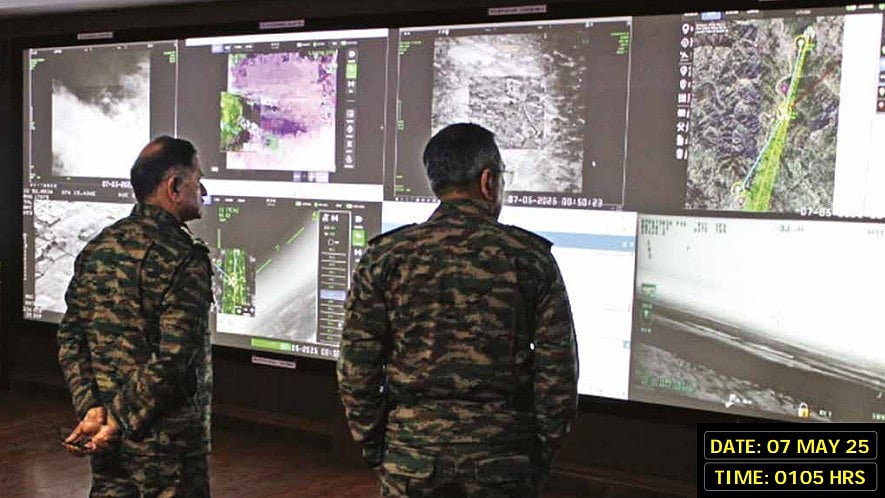
One of the photos used in the newsletter was time stamped at 0105 hours on May 7 when the Indian strikes began.
Credit: Indian Army
New Delhi: During the four-day of the Indo-Pak conflict, Indian Army’s air defence guns deployed from Kargil in the north to Sir Creek in south, had destroyed nearly 300 Pakistani drones while protecting sensitive areas.
On the night of May 7 when the armed forces struck the terror infrastructure deep inside Pakistan as well as in Pakistan-occupied Kashmir, the top brass of the armed forces including the Chief of Defence Staff Gen Anil Chauhan was present at a facility inside Army headquarters monitoring the action live.
A series of photos published by the Indian Army in the latest edition of its monthly newsletter (Baat Cheet) shows other top officials like Army chief Gen Upendra Dwivedi, IAF chief Air Chief Marshal A P Singh, Navy Chief Admiral Dinesh Tripathi, Army Vice Chief Lt Gen N S Raja Subramani and Director General Military Operations Lt Gen Rajiv Ghai were among those present at the facility.
One of the photos used in the newsletter was time stamped at 0105 hours on May 7 when the Indian strikes began. The newsletter has been circulated to the ranks in the 13 lakh strong force.
At a media briefing on May 7, Col Sofiya Qureshi and Wing Commander Vyomika Singh had stated that in a span of 25 minutes between 0105 and 0130 hours, the Indian Army and Indian Air Force platforms fired two dozen missiles and other weapons to hit nine terror camps including Jaish-e-Mohammed headquarters at Bahawalpur and Lashkar-e- Taiba headquarters at Muridke.
Some of the air defence systems used by the army are medium range surface to air missiles, Zu-23 mm guns, Akash missiles, L-70 guns, OSA-AK combat vehicles and Akasteer command system.
These were used to detect, track and kill nearly 300 Pakistani drones. Out of the nine terror camps, four were inside Pakistan and the remaining five were in PoK, as per the newsletter.
It names five front outfits created by the LeT and JeM including The Resistance Front (TRF) that took the responsibility for the April 22 carnage at Pahalgam.
Lt Col Harsh Gupta and Hav Surinder Singh created the official logo of the anti-terror operation.
Credit: Indian Army
Using the newsletter, the Indian Army also disclosed the identity of the two individuals who designed the Operation Sindoor logo. Lt Col Harsh Gupta and Hav Surinder Singh created the official logo of the anti-terror operation.
